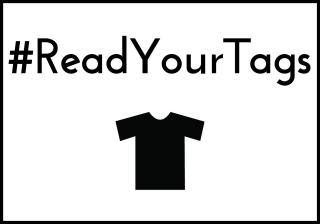Caroline Sinders
Read Your Tags
A physical installation that breaks down the United States Apparel Consumption From 2010 via country of origin of manufacturing through stacks of tee shirts.
http://itp.nyu.edu/~cds313/blog/?p=279

Classes
Data Representation
Data Representation
I am creating a physical bar graph through stacks of tee-shirts that illustrates where the United States purchases clothing from. In 2010, 34.27% of U.S. clothing purchased was manufactured in China. Compared to 1.96% of clothing purchased being produced in the U.S. I will have 9 stacks of tee shirts (each stack is like a bar on a bar graph) for different areas of import: CAFTA-DR (a free trade agreement between the US and Costa Rica, Guatemala, Honduras, El Salvador, Nicaragua and the Dominican Republic), China, Indonesia, Bangladesh, Vietnam, India, United States, Mexico, and the rest of the world. Each stack of tee shirts will be a different color. In front of each stack will be a wooden plaque that is turned over, so the top is completely blank. When you turn the plaque over, it will say which country and percentage the stack represents. So, China's would say "China 34.27%."
Within each stack, I will have clothing tags that give information about manufacturing within the country of origin. Another example- China is the leading producer of polyester, it produces 36% of the world's polyester."
This project is designed to teach the user about where their clothing comes from and environmental affects of said clothing. Within the clothing stacks, I will create tags that highlight how much clothing the US consumes, how much is thrown away, and the amount of energy that goes into clothing production.
I have contacted a variety of organizations: the American Apparel and Footwear Association, the Council for Textile Recycling, USA EPA Textile Common Wastes and Materials, and Not for Sale (an organization that highlights sweatshop labor); who have all given me access to a variety of data sets and excel spreadsheets they have compiled on this subject.
Within each stack, I will have clothing tags that give information about manufacturing within the country of origin. Another example- China is the leading producer of polyester, it produces 36% of the world's polyester."
This project is designed to teach the user about where their clothing comes from and environmental affects of said clothing. Within the clothing stacks, I will create tags that highlight how much clothing the US consumes, how much is thrown away, and the amount of energy that goes into clothing production.
I have contacted a variety of organizations: the American Apparel and Footwear Association, the Council for Textile Recycling, USA EPA Textile Common Wastes and Materials, and Not for Sale (an organization that highlights sweatshop labor); who have all given me access to a variety of data sets and excel spreadsheets they have compiled on this subject.

